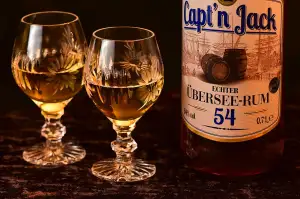Fit for Royalty: Decoding the Delectable Coronation Food Menu

Coronation food holds a special place in history as it symbolizes grandeur, tradition, and celebration. Dating back centuries, coronation feasts have been lavish affairs showcasing the finest culinary creations fit for royalty. These elaborate meals served during the crowning of monarchs are not only a feast for the palate but also a reflection of the culture and heritage of the reigning dynasty. The carefully curated menus feature an array of sumptuous dishes that have stood the test of time, making coronation food a fascinating topic that offers a glimpse into the opulent world of royal dining.
Historical Significance of Coronation Feasts
Coronation feasts have a rich historical significance dating back centuries. These lavish banquets were not only a celebration of the newly crowned monarch but also served as a symbol of power, wealth, and unity. The elaborate menus showcased the kingdom's finest ingredients and culinary skills, reinforcing the monarch's status and authority. These feasts were also an opportunity for the royal court to display their opulence and hospitality to foreign dignitaries and nobles, solidifying alliances and diplomatic relations. The tradition of coronation feasts continues to this day, honoring tradition while embracing modern culinary trends.
Traditional Dishes Served at Coronations
Traditional dishes served at coronations are steeped in history and tradition, reflecting the cultural heritage of the monarchy. Some classic dishes include coronation chicken, a dish created for Queen Elizabeth II's coronation in 1953, consisting of cold chicken in a creamy curry sauce. Another staple is lamb or beef roasted with herbs and served with rich gravy. Puddings like fruitcake or trifle are also common, symbolizing abundance and prosperity. These timeless dishes have been enjoyed by royalty for centuries, showcasing the culinary excellence of the royal kitchen.
Evolution of Coronation Menus Over Time
Over time, coronation menus have evolved reflecting changes in tastes, trends, and cultural influences. In the past, elaborate dishes like peacock pie and swan were common at medieval coronations. During the Victorian era, French-inspired haute cuisine became popular with dishes such as turtle soup and boar's head. In more recent times, there has been a shift towards lighter and more modern fare, with an emphasis on seasonal and locally sourced ingredients. Today, coronation menus are a blend of tradition and innovation, showcasing the best of British culinary heritage alongside contemporary gastronomic trends.
Modern Interpretations of Coronation Cuisine
In modern times, chefs and food enthusiasts have taken inspiration from traditional coronation cuisine to create innovative and contemporary interpretations of these historic dishes. By incorporating global flavors, using sustainable ingredients, and experimenting with new cooking techniques, chefs are able to put a modern twist on classic coronation recipes. These updated versions often showcase a fusion of flavors and textures that appeal to a wider range of palates while still paying homage to the rich culinary heritage of royal feasts. Whether it's reinventing a classic dish with a plant-based twist or presenting a deconstructed version of a traditional recipe, modern interpretations of coronation cuisine continue to captivate food lovers around the world.
Tips for Hosting a Coronation-inspired Feast at Home
1. Research Traditional Recipes: Look into traditional coronation dishes like coronation chicken or fruitcake to recreate authentic flavors.
2. Create a Regal Ambiance: Set the mood with elegant table settings, candles, and perhaps even some royal-themed decorations.
3. Serve in Courses: Emulate the formal dining style of a coronation feast by serving multiple courses, starting with appetizers and ending with dessert.
4. Incorporate Royal Colors: Use reds, golds, and purples in your table decor and food presentation to add a touch of regal flair.
5. Offer a Signature Drink: Consider serving a special cocktail or mocktail inspired by royal favorites to elevate the dining experience.
6. Dress the Part: Encourage guests to dress in their finest attire to match the grandeur of the occasion.
7. Enjoy the Experience: Above all, savor the opportunity to indulge in delicious food and celebrate in true royal fashion with loved ones.
In conclusion, the Coronation food menu is a rich tapestry of tradition, history, and culinary excellence. From the lavish feasts of the past to the modern interpretations of today, these royal meals have always been a symbol of grandeur and celebration. By exploring and appreciating the dishes served at Coronations, we not only honor centuries-old traditions but also gain insight into the evolution of culinary tastes and techniques. Hosting a Coronation-inspired feast at home can be a delightful way to pay homage to this regal heritage while enjoying delicious dishes fit for royalty. So why not embark on your own culinary journey and experience the magic of Coronation cuisine in your own dining room?
Published: 20. 04. 2024
Category: Home



